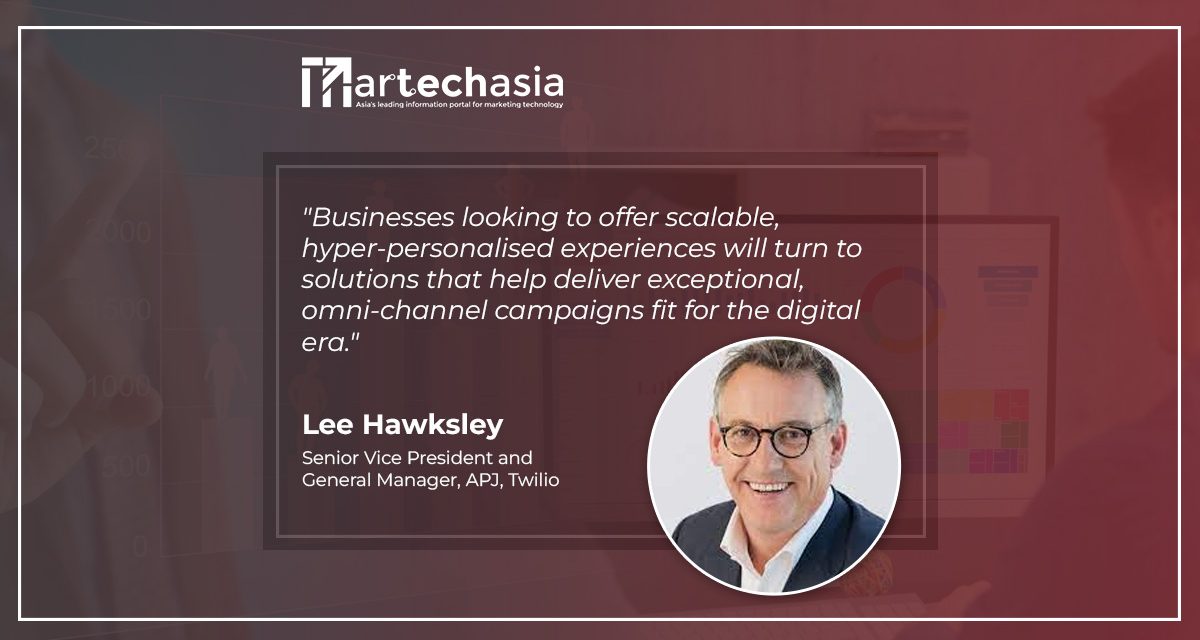What are the defining trends that will shape customer engagement?
Customer engagement as we know it has been forever altered by the pandemic – customers are increasingly expecting seamless omnichannel experiences, and businesses are racing to meet these new expectations. But amid this rapid acceleration and flurry of transformation, what must be at the core of their digital strategy? Lee Hawksley, Vice President and General Manager, APJ, Twilio, shares his insights on the defining trends that will shape customer engagement.
Personalised customer experiences will be delivered from digital concierges at home
Customer engagement as we know it has been forever altered by the pandemic. Almost immediately the pandemic hit organisations of all shapes and sizes, and in every industry completely re-evaluated and re-prioritised their digital transformation agendas.
The consequence was that many companies in APAC accelerated at an unprecedented pace, some by as much as four to five years. This has simultaneously created entirely new and innovative ways of connecting with and servicing customers, and unlocked new opportunities in the workforce. According to LinkedIn’s Jobs on the Rise Report 2021, roles in Customer Service, including customer support and contact centre specialists, are among the fastest-growing in Southeast Asia.
These two forces acting in conjunction will drive a change in contact centres of the future. As brands act swiftly to close the experience gap, meet customer needs and become more agile, they will undoubtedly adopt a more digital-first approach for their contact centre.
This means increased investments in digital solutions, which will not only empower more agents to work remotely, but also offer greater omnichannel experiences in line with customers’ needs. We will see even more businesses build flexible, tailored contact centres that can respond to rapidly changing market conditions, and serve customers on any channels.
Enterprise investment in monolithic Marketing Clouds and CRM will be questioned
According to Twilio’s State of Customer Engagement Report 2021, even as the volume of digital interactions increased by 54% over the past year, almost half of organizations still face challenges getting accurate customer data. This poses a huge obstacle in today’s era of hyper-personalisation – brands who fail to effectively tap on first-party data and translate this into actionable insights and engagement will lose out amid an increasingly competitive landscape.
This will necessitate a shift away from outdated technology like CRM and marketing clouds. Such tools were built for a bygone era, and lack the ability to collect customer data into one unified view at consumer scale. They simply aren’t equipped to capture the billions of customer signals that exist today.
Instead, businesses looking to offer scalable, hyper-personalised experiences will turn to solutions that help deliver exceptional, omni-channel campaigns fit for the digital era. Their sights will be set on Customer Engagement Platforms (CEP) that combine customer data infrastructure with scalable communication APIs, so they can quickly build and move from idea to execution.
Technologists will cement their place on the board
One of the biggest impediments in businesses’ digital transformation journey is that they operate in silos. The truth is that today, business and IT cannot be decoupled – as legacy companies race to innovate and new digital natives emerge, IT decisions have essentially become business decisions. Technologists hold the key to their organization’s digital journeys, so it is crucial that they are involved to set the tone and define the strategic objectives for the overall business. This is necessary to ensure that every decision – from software development to tech implementation – ladders back to a larger objective that advances the businesses’ digital agenda. With that, we can expect to see more technical CEOs and co-founders on the board and those that are already there will have a bigger voice. Organizations will also move to bring in developers as partners within the business, and tap on their expertise to spot gaps in existing solutions and solve business problems.


















